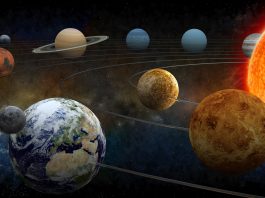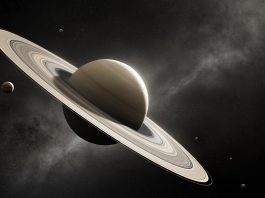Astronomers at the Center for Astrophysics say they have found ‘smoking gun’ evidence of a new small planet located within a protoplanetary disk.
Hidden deep in the disk, research discovered that the planet is around the size of Neptune or Saturn and is around one to 3 million years old, which is relatively young when it comes to planets.
Previous research has identified that planets are born in protoplanetary disks that surround new stars. Hundreds of these disks have been spotted around the universe, but observing their birth and formation has proved difficult.
“Directly detecting young planets is very challenging and has so far only been successful in one or two cases,” said Feng Long, postdoctoral researcher at the Center for Astrophysics. “The planets are always too faint for us to see because they’re embedded in thick layers of gas and dust.”
Technology for discovering hidden planets
Research published in The Astrophysical Journal Letters details how a group of astronomers have developed a new technique to detect these planets. They decided to revisit old protoplanetary disks to look for evidence of formation.
They observed a disc discovered in 2019 known as ’LkCa 15’, which is located 518 light years away and sits in the Taurus constellation in the sky. This disc already had evidence of planet formation, but Long discovered two new faint features not previously detected.
The new high-resolution technology allowed Long to discover a dusty ring with two separate and bright bunches of material orbiting within it. This was discovered to be a small planet.
The newly discovered planet took shape as a small clump and larger arc, separated by around 120 degrees. Computer models detected that its size and location matched the model for planet presence.
“This arc and clump are separated by about 120 degrees,” Long said. “That degree of separation doesn’t just happen — it’s important mathematically.”
“We’re seeing that this material is not just floating around freely, it’s stable and has a preference where it wants to be located based on physics and the objects involved.”
Hidden 60 degrees between the material is a small planet that was embedded in dust within the protoplanetary disk.
Future research
Technology constraints mean that directly imaging the small planet is not currently possible. However, Long believes that further high technology observations of protoplanetary disks will help provide additional evidence of her planetary discovery.
She also hopes her new approach for detecting small planets will be used in the future by other astronomers.
Long concluded: “I do hope this method can be widely adopted in the future. The only caveat is that this requires very deep data as the signal is weak.”









